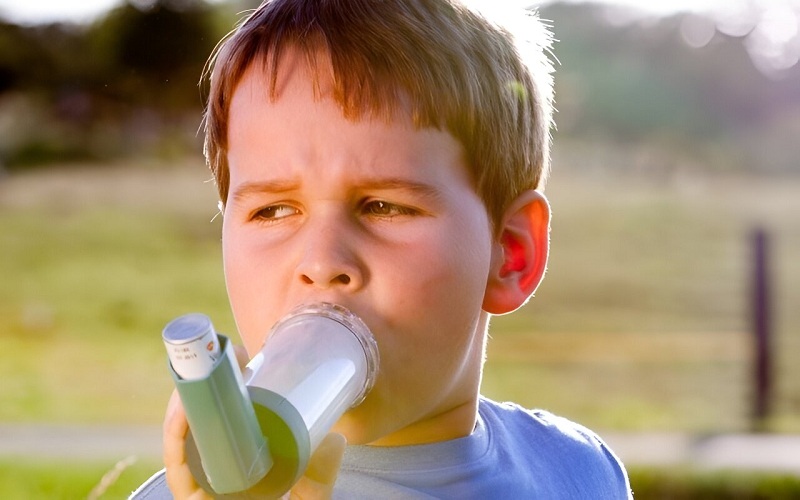
Link between Air Pollution and Childhood Asthma
Air pollution is a significant public health concern worldwide, with adverse effects on respiratory health being well-documented. Among the most vulnerable populations are children, particularly those with asthma.
In this comprehensive guide, we will explore the intricate link between air pollution and childhood asthma, shedding light on the impact of environmental factors on respiratory health.
Childhood Asthma: An Overview
Childhood asthma is a chronic respiratory condition characterized by inflammation and narrowing of the airways, leading to symptoms such as wheezing, coughing, chest tightness, and shortness of breath. It is one of the most common chronic diseases in children, affecting millions worldwide. While genetics play a role in asthma susceptibility, environmental factors, including air pollution, also contribute significantly to its development and exacerbation.
It’s best search for “asthma specialist near me” or “pediatric asthma doctor near me” to find the best doctor in your locality instead of trying DIY methods.
Impact of Air Pollution on Childhood Asthma
Numerous studies have established a clear association between exposure to air pollution and the development and exacerbation of childhood asthma. Pollutants such as PM, NO2, and O3 can irritate the airways, trigger inflammatory responses, and worsen asthma symptoms. Children with asthma who are exposed to high levels of air pollution are more likely to experience exacerbations, emergency room visits, and hospitalizations.
Particulate Matter (PM) and Asthma
Particulate matter (PM) is a complex mixture of tiny particles suspended in the air, ranging in size from coarse dust to fine particles that can penetrate deep into the lungs. PM can act as a carrier for allergens and irritants, exacerbating asthma symptoms and triggering asthma attacks. Long-term exposure to PM has been linked to decreased lung function, increased asthma prevalence, and greater severity of asthma symptoms in children.
If this happens, search for “best asthma specialist near me” as soon as you can.
Nitrogen Dioxide (NO2) and Asthma
Nitrogen dioxide (NO2) is a common air pollutant primarily emitted from vehicle exhaust and combustion processes. Exposure to NO2 can exacerbate asthma symptoms, increase airway inflammation, and decrease lung function in children with asthma. High levels of NO2 have been associated with an increased risk of asthma development and hospital admissions for asthma-related complications.
Ozone (O3) and Asthma
Ozone (O3) is a highly reactive gas formed by the reaction of sunlight with pollutants such as nitrogen oxides (NOx) and volatile organic compounds (VOCs). Elevated levels of O3, particularly during the summer months, can trigger asthma exacerbations, worsen respiratory symptoms, and increase the need for asthma medications in children. Long-term exposure to O3 has been linked to decreased lung function and increased asthma prevalence in children.
Indoor Air Quality and Childhood Asthma
While outdoor air pollution garners significant attention, indoor air quality also plays a crucial role in childhood asthma. Indoor pollutants such as tobacco smoke, mold, pet dander, and volatile organic compounds (VOCs) can exacerbate asthma symptoms and trigger asthma attacks. Improving indoor air quality through proper ventilation, air filtration, and elimination of potential allergens can help reduce asthma morbidity and improve respiratory health in children.
Strategies for Prevention and Management
Addressing air pollution-related asthma requires a multifaceted approach involving public health interventions, environmental regulations, and individual-level interventions. Strategies for prevention and management include reducing exposure to outdoor air pollution through emission controls and urban planning, promoting clean energy sources and sustainable transportation options, and implementing indoor air quality measures in homes, schools, and healthcare facilities. If the symptoms are severe, consult with the children’s lung asthma and sleep specialists.
Importance of Collaboration
Collaboration between healthcare providers, environmental agencies, policymakers, and community stakeholders is essential for addressing the complex interplay between air pollution and childhood asthma. By working together to mitigate environmental hazards, promote respiratory health education, and advocate for evidence-based policies, we can create healthier environments for children and reduce the burden of asthma-related morbidity and mortality.
Conclusion
In conclusion, air pollution represents a significant risk factor for childhood asthma, contributing to the development, exacerbation, and severity of respiratory symptoms in children. Understanding the link between air pollution and childhood asthma is essential for implementing effective prevention and management strategies, specifically with the help of an asthma specialist in Manchester. By prioritizing clean air initiatives, promoting respiratory health education, and fostering collaboration across sectors, we can protect the respiratory health of future generations and create a healthier environment for all.
